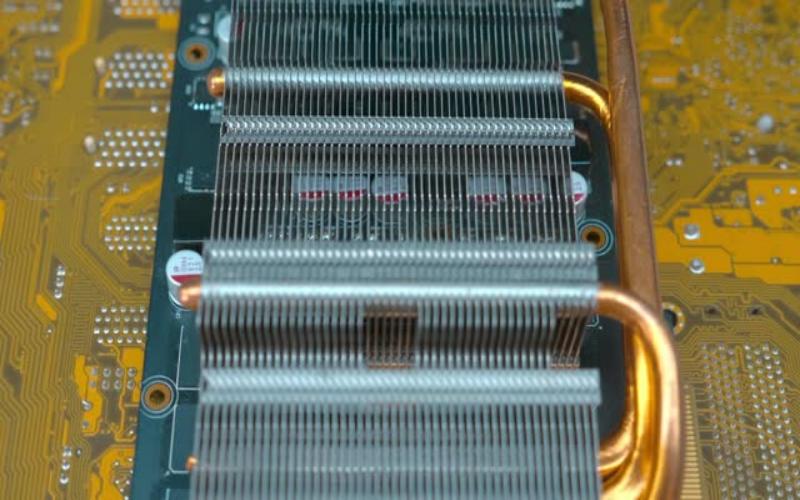Advantages of Cold Forged Heat Sink: A Comprehensive Guide
Introduction:
Cold forging is a manufacturing process that has gained immense popularity in the production of heat sinks. Heat sinks are essential components in electronic devices as they help dissipate heat and prevent overheating, which can lead to performance issues and even damage to the device. In this article, we will explore the various advantages of using cold forged heat sinks and why they are preferred over traditional methods. Let's delve into the details.
1. Enhanced Thermal Conductivity
Cold forged heat sinks offer significantly improved thermal conductivity compared to other manufacturing methods. The cold forging process involves shaping the heat sink using high-pressure compressive forces, which result in a more compact and dense structure. This increased density allows for better heat transfer from the electronic device to the heat sink, resulting in improved cooling efficiency.
2. Cost-Effectiveness of Cold Forged Heat Sink
When it comes to manufacturing heat sinks, cost plays a crucial role. Cold forged heat sinks offer a cost-effective solution due to their efficient production process. Cold forging allows for the production of heat sinks with complex shapes and intricate designs in a single step, eliminating the need for additional machining or assembly processes. This reduces production time and overall costs, making cold forged heat sinks an economical choice.
3. Lightweight and Compact
Cold forged heat sinks are known for their lightweight and compact design. The cold forging process allows for the creation of heat sinks with thin fins and smaller overall dimensions, without compromising on performance. The lightweight nature of these heat sinks not only reduces the overall weight of electronic devices but also makes them suitable for applications where space is limited.
4. High Durability of Cold Forged Heat Sink
Cold forged heat sinks are highly durable and can withstand harsh operating conditions. The compressive forces applied during the cold forging process result in a strong and sturdy structure that can resist vibrations, impacts, and thermal cycling. This durability ensures a longer lifespan for the heat sink and enhances the reliability of the electronic device.
5. Efficient Heat Dissipation
The primary function of a heat sink is to dissipate heat efficiently. Cold forged heat sinks excel in this aspect due to their optimized design and improved thermal conductivity. The compact and dense structure of cold forged heat sinks allows for better airflow and heat transfer, ensuring effective heat dissipation from the electronic device. This, in turn, helps maintain the device's optimal operating temperature and prevents overheating.
6. Customization Options
Cold forging offers a high degree of customization for heat sinks. Manufacturers can easily tailor the design, shape, and size of the heat sink to meet specific requirements. Whether it's for a small portable device or a large industrial application, cold forged heat sinks can be customized to fit the desired specifications. This flexibility makes them suitable for a wide range of electronic devices.
7. Improved Electrical Insulation
Cold forged heat sinks often incorporate electrical insulation materials, such as ceramics or polymers, to further enhance their performance. These insulation materials prevent any electrically conductive contact between the heat sink and the electronic components, reducing the risk of short circuits and electrical failures. The use of electrical insulation materials also improves the overall safety of the electronic device.
8. Eco-Friendly Manufacturing Process
Cold forging is considered an eco-friendly manufacturing process for heat sinks. The process generates minimal waste, as it involves shaping the heat sink directly from a solid piece of metal, eliminating the need for excessive material removal. Additionally, cold forging consumes less energy compared to other manufacturing methods, reducing the carbon footprint associated with heat sink production.
9. Compatibility with Different Materials
Cold forged heat sinks can be manufactured using a wide range of materials, including aluminum, copper, and their alloys. This compatibility with different materials allows for customization based on specific thermal and mechanical requirements. Each material offers its own advantages, such as high thermal conductivity or superior corrosion resistance, ensuring the heat sink meets the desired performance criteria.
10. Wide Range of Applications
Cold forged heat sinks find applications in various industries, including electronics, telecommunications, automotive, aerospace, and more. Their versatility, combined with the numerous advantages mentioned above, makes them an ideal choice for cooling electronic devices in different settings. From smartphones and laptops to power electronics and LED lighting, cold forged heat sinks play a crucial role in maintaining optimal device performance.
Conclusion:
Cold forged heat sinks offer numerous advantages over traditional manufacturing methods. Their enhanced thermal conductivity, cost-effectiveness, lightweight design, high durability, and efficient heat dissipation make them a preferred choice for cooling electronic devices. With the ability to customize the shape, size, and material, cold forged heat sinks cater to a wide range of applications across various industries. If you are looking for an effective and reliable cooling solution for your electronic device, consider the advantages of cold forged heat sinks.

